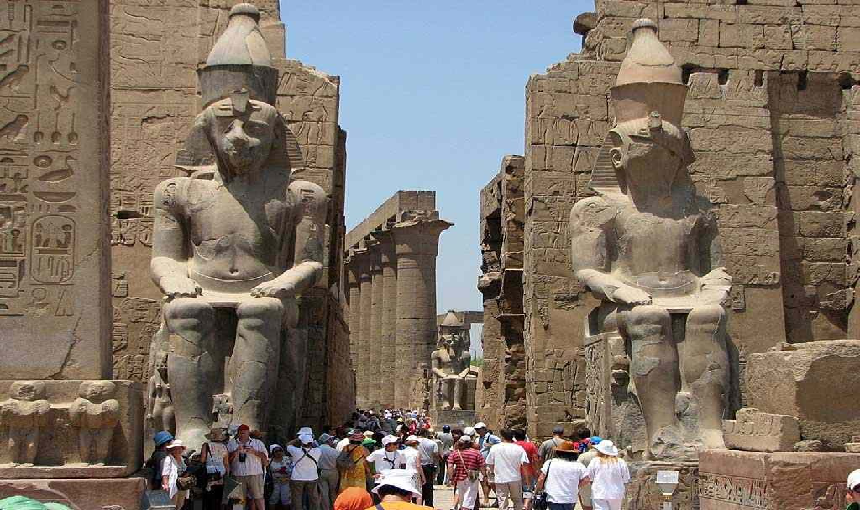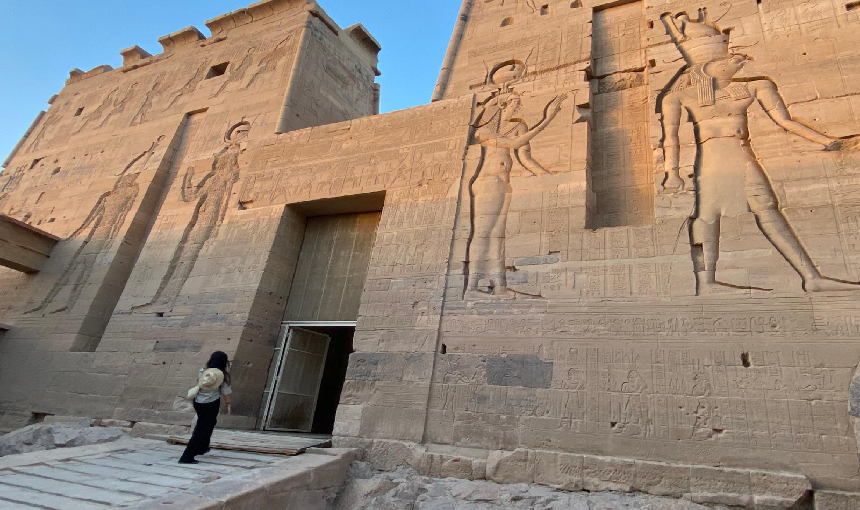Luxor Temple stands as one of the most iconic and well-preserved monuments of ancient Egypt. Situated on the east bank of the Nile River in Luxor (ancient Thebes), this magnificent temple is a must-visit destination for anyone traveling through Egypt, especially those on a Nile cruise. This article delves into the rich history, architectural marvels, and cultural significance of Luxor Temple, providing you with a comprehensive guide to exploring this ancient wonder.
The Historical Significance of Luxor Temple
The people primarily dedicated Luxor Temple to the Theban Triad of Amun, Mut, and Khonsu. Unlike other temples in Egypt that honor a god or a pharaoh, they built Luxor Temple to celebrate the rejuvenation of kingship, making it unique among Egypt’s ancient structures. They constructed the temple over several centuries, with Amenhotep III, Tutankhamun, Horemheb, and Ramses II each contributing to its grandeur.
Architectural Marvels of Luxor Temple
The architecture of Luxor Temple is a testament to the ingenuity and skill of ancient Egyptian builders. The First Pylon, built by Ramses II, marks the entrance to the temple. Adorned with massive statues of the pharaoh and intricate carvings depicting his military victories. One of the two original obelisks still stands, while the other now resides in the Place de la Concorde in Paris.
The Avenue of Sphinxes
Leading up to the temple is the Avenue of Sphinxes, a 2.7-kilometer-long path flanked by hundreds of sphinx statues. This grand avenue once connected Luxor Temple to Karnak Temple, symbolizing the spiritual and ceremonial link between the two.
The Great Court of Ramses II
As visitors enter the temple, the Great Court of Ramses II greets them, a vast open space surrounded by a double row of papyrus columns. The court contains several statues of Ramses II and a shrine dedicated to the Theban Triad.
The Colonnade of Amenhotep III
Beyond the Great Court lies the Colonnade of Amenhotep III, an impressive corridor lined with towering columns. Hieroglyphic inscriptions and reliefs depicting religious ceremonies and the annual Opet Festival, which celebrated the fertility of the Nile and the renewal of kingship, adorn these columns.
The Hypostyle Hall and the Inner Sanctuaries
The Hypostyle Hall, with its 32 towering columns, leads to the inner sanctuaries of the temple. They dedicated these sanctuaries to Amun, Mut, and Khonsu, used them for religious rituals, and housed the statues of the gods. Intricate carvings and paintings that illustrate various aspects of ancient Egyptian mythology and religious practices decorate the walls of these chambers.
4o
Cultural and Religious Significance
Luxor Temple played a vital role in the religious and cultural life of ancient Thebes. It was the center of the annual Opet Festival, one of the most important religious events in ancient Egypt. During this festival, they paraded the statues of Amun, Mut, and Khonsu from Karnak to Luxor Temple, symbolizing the divine rejuvenation of the pharaoh and the fertility of the land.
Visiting Luxor Temple
Luxor Temple is open to visitors year-round, and exploring it provides a unique glimpse into ancient Egyptian civilization. The best time to visit is during the cooler months from October to April. We highly recommend evening visits. Because the temple illuminates beautifully, offering a magical experience as you wander through its ancient halls.
How to Get There
Most visitors arrive in Luxor as part of a Nile cruise, which often includes guided tours of the temple. Alternatively, you can reach Luxor by flight or train from Cairo or Aswan.
Tips for Exploring Luxor Temple
- Hire a Guide: A knowledgeable guide can provide valuable insights into the history and significance of the temple, making your visit more enriching.
- Wear Comfortable Shoes: The temple complex is vast, and you’ll be doing a lot of walking.
- Stay Hydrated: Carry water with you, especially if you visit during the hotter months.
- Respect the Site: Remember that Luxor Temple is a historical monument. Avoid touching the carvings and statues and follow all guidelines provided by the site authorities.
Luxor Temple is not just a monument; it’s a journey through time, offering a window into the grandeur and spirituality of ancient Egypt. Whether you’re a history enthusiast, a cultural traveler, or simply someone seeking to experience the wonders of the world, Luxor Temple promises an unforgettable experience.
Embark on a journey through ancient history and marvel at the architectural wonders of Luxor Temple. Book your Nile cruise today with Direct Egypt Nile Cruise and witness the grandeur of Egypt’s past firsthand. Discover the magic of Luxor Temple and create memories that will last a lifetime.
Follow us on Facebook, Instagram, Pinterest and X.
Don't miss checking our other Egypt Nile Cruises




